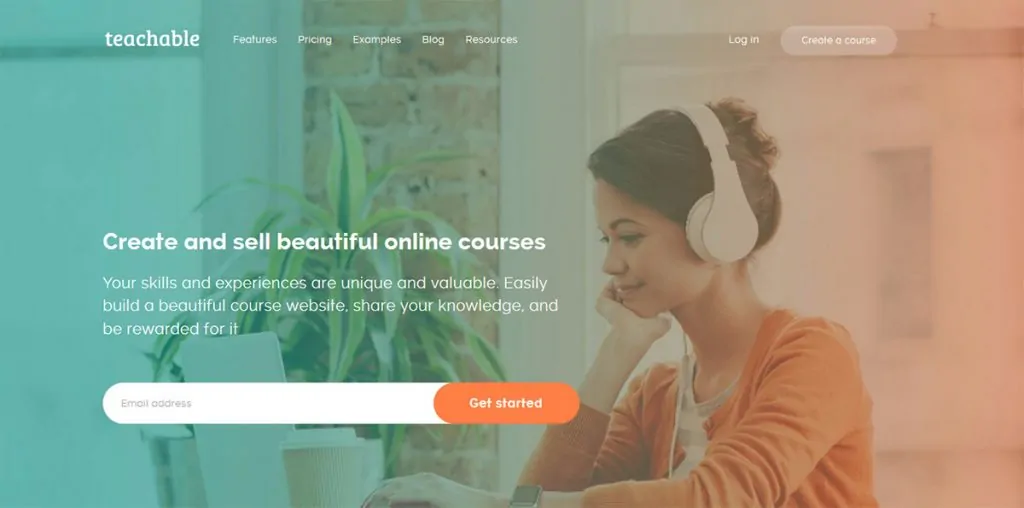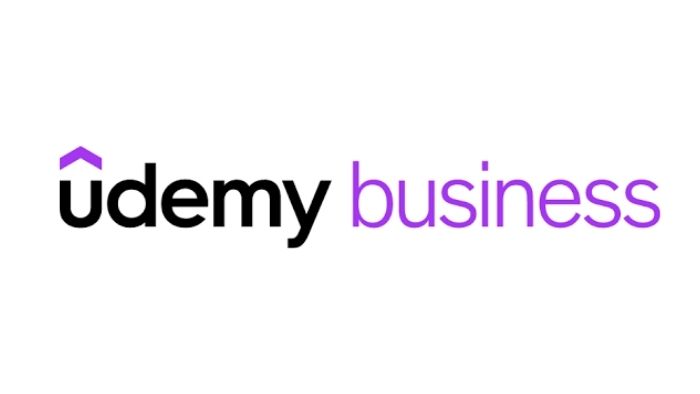Guides
How To Create An Online Course And Make Money

Do you want to learn how to create an online course and make money from it; we have compiled the best strategy that will help you create the course and also make money from it.
Making and selling online courses is one of the many ways you may earn money online. You can design a course around any relevant subject or talent you have to aid others online. They purchase the course from you in order to learn. By doing this, you can assist others to achieve their goals while also earning money.
One area that has experienced tremendous expansion recently is the creation and sale of online courses for profit. The global eLearning industry is anticipated to expand from less than $200 billion in 2019 to $375 billion by 2026, indicating an extraordinarily high and rising demand for authentic and reliable courses.
An online course is a collection of videos, PDF documents, textual materials, audio recordings, and whatever else you choose to include with the intention of advancing knowledge on a particular subject.
Millions of people learn almost anything through online courses taught by professionals, whether they want to learn SEO, how to start a business, how to play an instrument or any other skill.
Most people are experts in at least one field. While instructing others, you can use your area of expertise to earn money online. There are learners out there, whether it be in music, coding, business, blogging, making money, or anything else. Simply connect with the appropriate audience.
How To Create An Online Course
Utilizing software like Teachable makes it very simple to create online courses. They simplify your life for you. Teachable stands out among other platforms like Udemy, Coursera, and others.
Teachable registration is free. You may also join up for a monthly webinar hosted by teachable, a platform that has paid out over $250 million to instructors on its platform, which demonstrates how to build a course that will make you a lot of money. However, here are the best steps to creating your online course and making money
1. Research The Perfect Course Topic
2. Priotize Only High Demand Courses
3. Choose Your Platform
4. Create Your Course
5. Build A Pricing Structure
6. Promote our Course
1. Research The Perfect Course Topic
Choosing the topic you want to cover and doing significant research on it are the first steps to making money selling online courses. Your course topic will have an impact on everything, including your earning potential and the layout of your sales page.
Demand needs to be your first consideration when choosing a topic for your course. It’s easy to understand why. Making money will be simpler if there is a strong demand for the type of course you create because there are many individuals interested in what you sell.
Research is a must for any concept. Broaden your understanding of it to improve how you present it to your pupils and have a greater impact.
Assume you wish to impart knowledge about “how to quickly obtain investors for your firm.” You must conduct research about the challenges that new business owners experience when trying to attract investors. Since they will be your target audience, be aware of their desires and worries.
If you are finding it difficult to know the topic to create, you should consider the abilities, talents, and adventures you have had in life. Do not assume that in order to earn money from selling courses, you must teach at the university level. Although there are countless potential course subjects, here are a few from some of our satisfied customers:
- Microsoft Excel
- Coding
- SEO
- Photography
- Sewing
- Digital Marketing
In other words, if you enjoy your subject, are skilled in it, have experience (either formal or informal) with it, and meet a need for someone, then you have a subject and expertise you can market.
Simply because someone likes you or what you sell won’t result in them buying your course. People enrol in online courses in an effort to change their present reality in order to achieve their ideal future.
2. Priotize Only High Demand Courses
If you want to make money selling your course, you must prioritize in-demand courses. Who wants to invest weeks of their lives designing an online course that will never be purchased? Nope.
Following the selection of your online course topic, you must carry out a number of market research experiments to determine whether there is a market for it or not. Many course developers make the error of believing that their course idea won’t be successful if there is a lot of competition in their field.
But in reality, this demonstrates that there is a great likelihood that there will be a significant market demand for that course idea, and it is therefore well worth further investigation.
In other to know if a course you are about to embark on has high demand in the market, the best tool for that research is Google Trends. You can find out how popular a topic is using Google Trends. It’s the easiest way to see if someone is using Google to search for something and how popular a subject is over time.
3. Choose Your Platform
Selecting a platform to house your course is necessary. It is really crucial. A large student body and other instructors are indicators of a strong platform. We advise being teachable. It is a pretty dependable starting point with over 15 million students learning and over 65,000 instructors.
A platform for selling online courses facilitates the hosting, delivery, and sale of your course to customers and handles all aspects of its creation, including marketing, payment processing, and more.
There are a variety of selling platforms available. Teachable, iSpring Market, Udemy, and Thinkific are four of the most well-known.
The platform will be used by you to host and market your course. You’ll add the course material there, make your sales page, and handle payments there.
Before selecting a platform, you should have a clear notion of the course’s structure. In this manner, you can be certain that the platform you select provides all the functionality you require.
i. Teachable
Teachable is a reliable choice for new course teachers and is an easy-to-use course builder. It includes forums, quizzes, drip content, and a simple website builder.
Your courses can be hosted on a custom domain, and the platform has integrated marketing tools to assist you in attracting students to your course. Teachable offers a minimally featured free plan. Monthly fees for paid programs range from $39 to $299. With a yearly plan, you can save.
ii. Thinkific
Thinkific is a platform that combines sophisticated e-commerce and marketing tools along with all the functionality you need to build and deliver courses on your own branded website. Building a site with WordPress is really flexible; you can design a sales page that lists all of your courses, a landing page for each course, and more. Additionally, you can link your website for selling courses to any other active website to give your audience a consistent brand experience.
In conclusion, Thinkific is a wonderful option for individuals looking to market their online courses. However, for new course sellers, the variety of alternatives it offers may be too much.
In addition to the course builder, Thinkific features full-fledged websites that you can customize however you’d like. Plus, the sales page templates are highly optimized and ready to convert visitors into students.
Overall, the platform offers an extensive set of features that may be beyond the needs of new course sellers. Thinkific has a free service that provides limited functionality. Paid plans start at $49 per month.
iii. Udemy
A lot of features, tools, and themes are available on the user-friendly platform Udemy to help you launch your eLearning courses. It allows you to sell your courses to its enormous user base (24+ million), unlike many rivals.
All of these people sign up for Udemy to access courses, but you don’t get their email addresses or other personal information, so you can’t really use this base as your own. Additionally, there is fierce competition among authors, which lowers the likelihood that your course will be chosen.
The kind of stuff you can submit on the platform is likewise extremely constrained. You can only produce and market video-based courses, in actuality. Udemy still offers all the required course selling tools and is free, making it a wonderful alternative for people who are new to teaching, designing, and selling eLearning.
However, Udemy is definitely not the ideal option for long-term financial success because it deducts from 50 to 80% of each transaction for marketing your course, and eventually, you’ll probably figure out how to sell the courses independently.
iv. iSpring Market
The ideal candidates for iSpring Market are those who wish to immediately start offering courses online while retaining complete control over design, marketing, and sales. You can quickly construct your marketplace and put your course up for sale thanks to its simple, user-friendly interface.
You can build courses on the site by assembling the necessary content, or you can upload already created courses. All content formats, including pure eLearning SCORM, are supported, including audio, video, text, and images.
iSpring Market offers a high-conversion sales funnel that is coupled with your email marketing tool and other apps via Zapier, as well as robust analytics that enable you to keep track of sales, engagement, and customer happiness.
4. Create Your Course
You can start creating your online course after putting in place a course platform.
The majority of your labour will be spent developing and creating the course material. It will take some time to record the content, but it shouldn’t be too challenging. With a little basic equipment, you can produce a high-quality course video.
You will need to edit your videos once you record them in order to make them watchable for your audience. From there, you can start creating and including any other resources you want to provide students within your course platform.
Never undervalue the significance of learning results. If you don’t do this when creating your online courses, you run the serious risk of damaging both your reputation and your financial position.
Your pupils can transition from their present situation to the future they want with the help of online courses. Would you give someone your money for a product whose purpose you are unsure and for which you have no understanding? Obviously not.
You should not assume that your students will understand the benefits of your course just because you do. Students are less inclined to sign up for your course if they don’t understand HOW it will benefit them.
Learning outcomes precisely define what the learner will be able to do, know, and feel at the end of the course and do so using quantifiable verbs.
Here are a few tips to help guide the creation of your course:
I. Create an outline first: By starting with an outline you can lay out everything your course will cover to ensure it is presented in the most insightful order.
ii. Break into lessons – Segmenting your course material into different lessons helps keep things organized. Try keeping the lessons to small digestible topics as it makes it easier for students to retain the information.
iii. Use a combination of video and text – The best online courses use a mix of both text and video to teach readers. The combination creates a great learning experience for users.
iv. Include downloadable material – With downloadable material, you can provide your users with more actionable resources. This could be a template, a checklist, a spreadsheet, or any other tool that helps students apply what they’ve learned.
v. Checklists at the end of each lesson – Adding a checklist to the end of each lesson helps wrap up the section, giving students a quick summary of the key points to remember.
5. Build A Pricing Structure
In order for your online course to fit into your broader online course business model, you must have a plan for how and where it will go.
Each of them will require that your course be slightly different in terms of design, the volume of content provided, marketing strategies, and placement of followers and students into various types of funnels.
This will also have a significant impact on the cost you must use for your online course in order for it to correspond with the place you give it inside your company.
For an online course, there is no right or wrong price or even a general range because it greatly depends on what you are giving. But as a beginning point, we advise you to research and compare your idea to similar products already on the market.
See what your rivals are asking and what they’re selling, then figure out how yours may be better and different. Price yours a little bit higher once you’ve improved yours.
Never set yours at a lesser price because that will only give the impression that it is worth less than those of your rivals.
Here are the most common pricing structures used for online courses:
- One-off payment
- Subscription-based
- Course bundles
- Free content, paid certifications
I. One-off payment
For online courses, this is the most straightforward price scheme. Customers must first pay a one-time price in order to access the content. The duration and topic matter of your course will determine how much you can charge for it.
This may cost as little as $29 or as much as several hundred dollars. Although you could price it higher, most people would likely not be able to afford it.
A too-low price for your course will make it difficult to create sizable profits.
ii. Subscription-based
For access to the course materials, you charge clients a monthly fee when using a subscription-based pricing system.
In most cases, subscriptions renew on a monthly basis. If you want to deliver more course material, a subscription-based pricing plan is a wise option.
You can let customers stretch out the expense over a long period of time rather than charging a large one-time fee.
In addition, users can always unsubscribe if they change their minds. You can make money off of post-course perks by using subscriptions. You might, for instance, have a private community that requires active enrollment from students in order to participate.
iii. Course Bundles
You can provide a number of courses at a discount when you sell them as a bundle.
The value of each sale can be greatly increased by using bundles. Customers who might have only purchased one course now buy several.
Customers gain access to numerous resources for a lower cost when they purchase bundles. We use course packages for our own digital marketing courses and are strong admirers of them.
If you have multiple courses to sell, you’ll want to consider this pricing model.
iv. Free content, paid certifications
Offering the course for free but charging for the certification is another approach to earning money with online programs.
Students benefit from certifications because they give them a way to demonstrate their knowledge to others. It must be highly regarded if you want people to pay for certification.
By developing a comprehensive course to go along with the certification, you can draw users to it.
6. Promote our Course
It’s possible that simply listing your course on a marketplace won’t result in sales. You must vigorously market it. Here are some of the most effective techniques to promote your course and rapidly start earning money from it:
i. Build an email list
ii. Create A Blog
iii. Social Media
i. Build an email list
Due to its high level of personalization and lack of intrusion, email marketing offers the highest return on investment of any form of advertising.
The largest source of sales comes from your email list. In order to connect and establish a relationship, you must gather the email addresses of your users. Through your blog, social networking sites, and any other medium, there are various ways to accomplish this.
One of the quickest strategies is to make your course temporarily free of charge. It will generate buzz, and word-of-mouth advertising will be very beneficial to you.
ii. Create A Blog
Create a blog if you don’t already have one, perhaps using the WordPress platform. It enhances your reputation while assisting you in generating a ton of targeted traffic.
Start publishing SEO-optimized content about your course topic once your site is up and running. Google will soon start sending natural traffic to your blog. Every visitor to your post is a potential student, so once you start receiving visits, marketing your course will be a breeze. Do you want to earn how to create a blog? Click here
iii. Social Media
Considering that there are more than 3.81 billion social media users worldwide, social media is the leading source of traffic creation. With the help of popular social networking sites like Facebook, Instagram, Twitter, and LinkedIn, you can simply connect with your target audience. You don’t just want to create your online course without sales, therefore, social media is a good tool to start with
Make accounts, write frequently, or share your most recent blog entries, then interact with your audience. Using social ads to direct targeted visitors to your course also makes sense. You may advertise your course on Facebook and Instagram for as little as $5 per day.
Conclusion
If you’re able to deliver excellent material and connect with your target audience, creating and selling online courses can be highly profitable. Additionally, you can launch your course and start earning money right away with the help of current technology platforms.
Make your first sales using iSpring Market’s free trial before the 14-day trial period is out. We, however, hope you learn something from this our how to create an online course and make money.
READ ALSO:
- How To Publish An E-Book Online And Make Money
- How To Start A Blog And Make Money(2023)
- How To Make Money Online In 2023
SOURCES: Reliablesoft, Thinkific, Udemy




